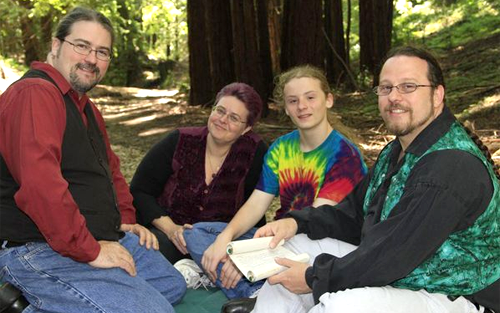
An equilateral triad family from the San Francisco area was recently profiled in National Geographic's show Taboo, in an episode entitled "Odd Couples." The family consists of two men and a woman who have been together for 17 years and are raising a teenager.
In 8 seasons of the show, National Geographic has turned the spotlight on many anthropological practices, such as voodoo, body modification, and initiation rituals, while also tackling topics that are merely unusual, such as strange pets and peculiar foods. Filming of the family took place last June, and there was trepidation over how the segment would be edited.
Thankfully, the family was treated respectfully. Alan M. describes the segment:
What a sweet portrayal it turned out to be, from start to finish! Cuddly kindness and family warmth; intelligence and thoughtfulness -- and such a steady smooth flow was evident among these people after their 17 years together. There was some mostly good commentary by a few talking-head experts (Helen Fisher, Peter Singer, Elisabeth Sheff). The 15-year-old in particular was articulate, perceptive, and proud to have so many good parental figures. The show went on for nearly 20 minutes including commercial breaks. It ended with them making a trip to Redwood Forest National Park (above), where they have an annual ritual of renewing their wedding vows.
Check National Geographic's schedule for air times. The episode cannot be found online at the moment, but you can watch a 3-minute preview on National Geographic's website.
